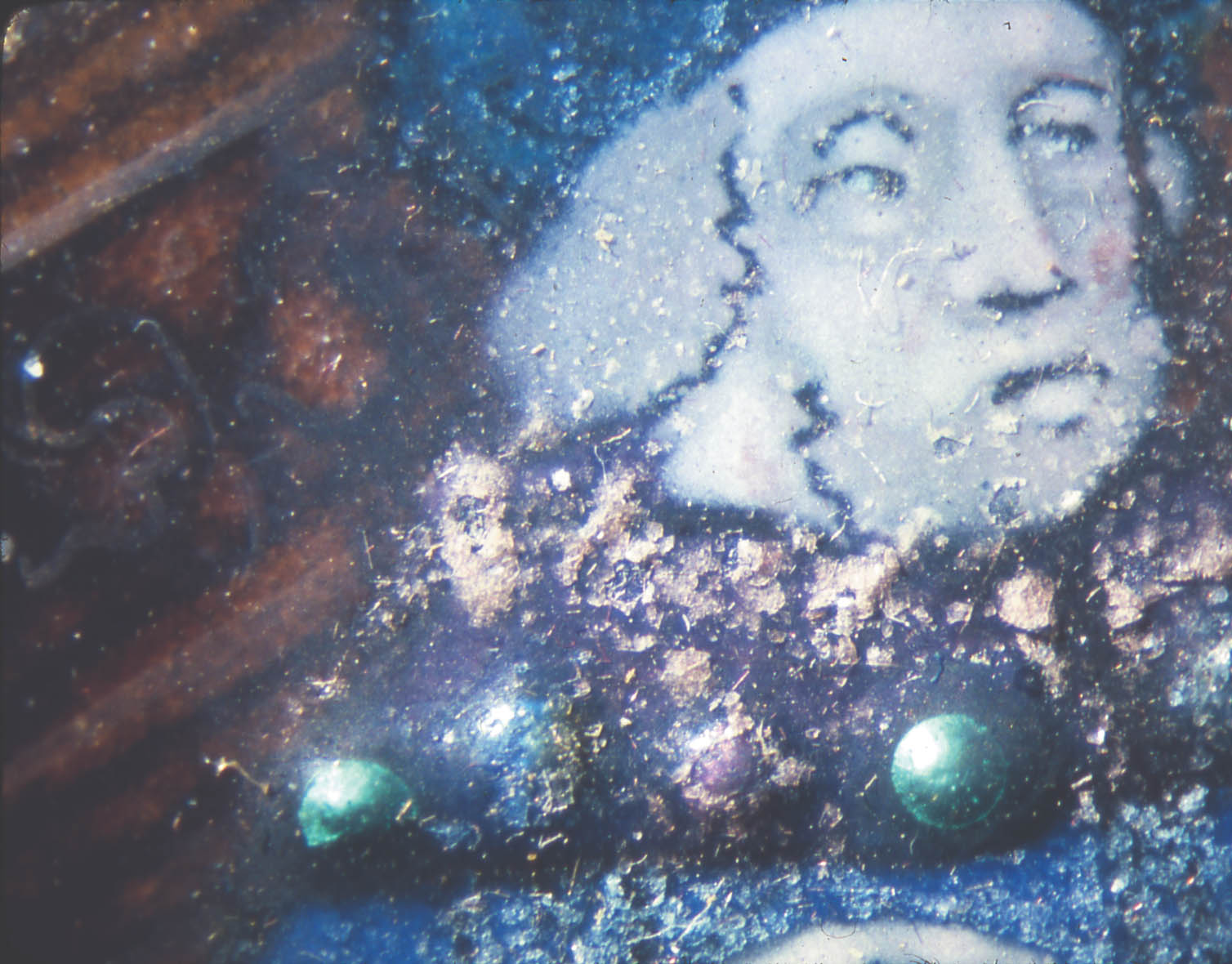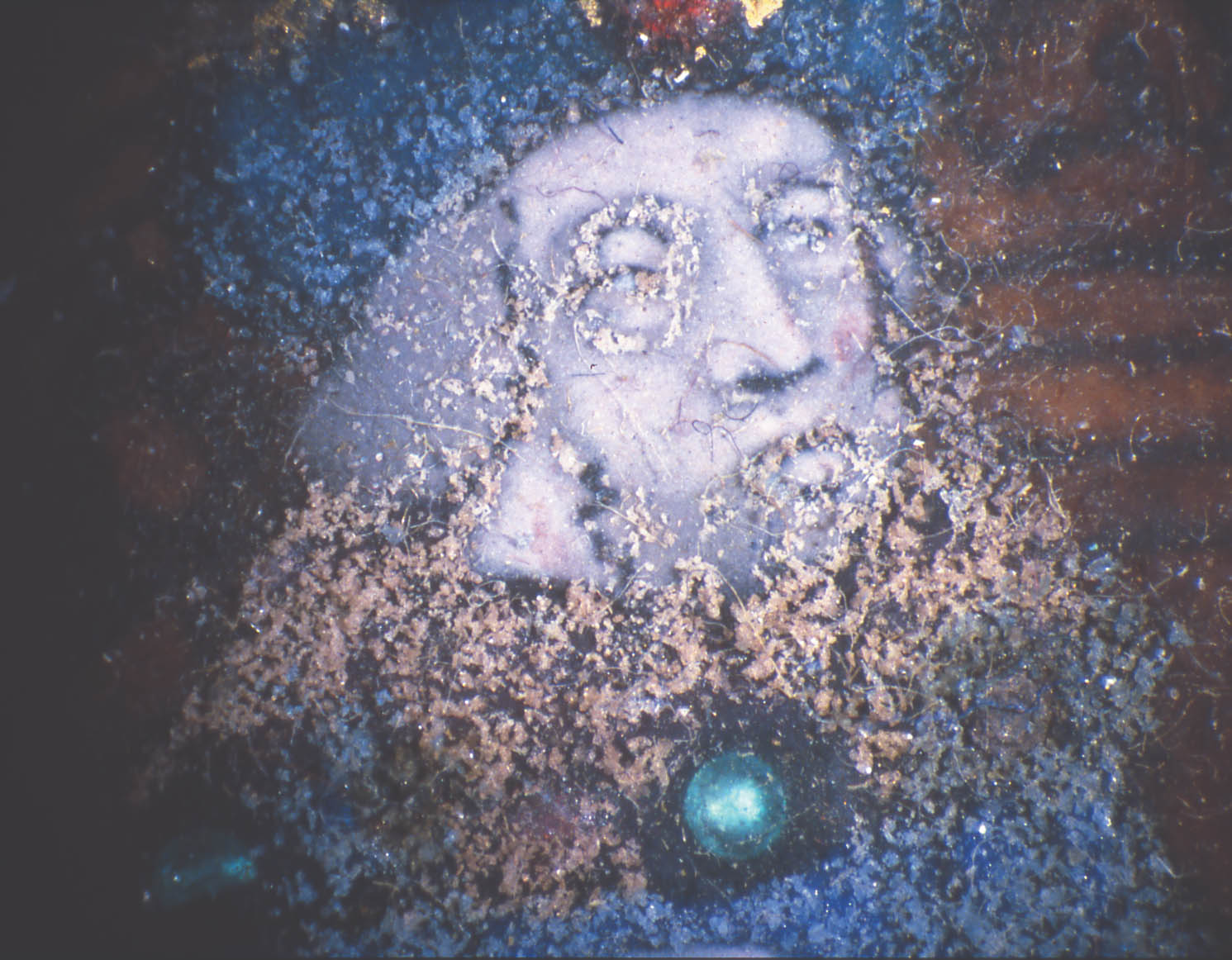THE EARLY PAINTED ENAMELS OF LIMOGES IN THE WALTERS ART MUSEUM: HISTORICAL CONTEXT AND OBSERVATIONS ON PAST TREATMENTSTERRY DRAYMAN-WEISSER
2 PRECURSORS TO THE EARLY LIMOGES PAINTED ENAMELSHerbert Maryon, in his treatise Metalwork and Enamelling (1971, 169), defines enamel “as a vitreous coating fused to a metallic base.” The process of One of the earliest literary references to enameling appears around A.D. 200 in the writings of Philostratus of Lemnos. While describing a boar hunt, he mentions the decoration on horse trappings in this way: “They say that the Barbarians who dwell in Ocean pour these colors on heated bronze, and that they adhere, become as hard as stone and preserve the designs that are made on them” (quoted in Chamot 1930, 1). It is interesting to note that national rivalries concerning enamels may influence interpretations of writings on the subject. For example, regarding Philostratus's observations, Chamot (1930, 1) writes in her book on English medieval enamels: “Some French writers have tried to prove that the country referred to was Gaul, but it is on the whole more likely that Britain was intended, especially since the finest specimens of early champlev� enamel on bronze have been found in this country.” From ancient times to the Renaissance, enamel was applied to metal in a number of ways, often achieving similar effects. One element that is common to all the techniques is that some metal remains visible on the surface, usually playing a decorative role in the design. For the craftsmen producing these works, goldsmithing and metalworking skills were as important as expertise in enameling. According to medievalist Marvin Ross (1941, 32), “All during the Middle Ages the working of metal and enameling were closely allied. In fact, Limoges … had no separate guild for its enamelers and they were included with the metalworkers. This seems quite just, because from the very nature of enameling no craftsman could practice without first being a metalworker.” The fact that goldsmithing and enameling were associated crafts is supported by documents dated 1328, showing that the goldsmith, Etienne de Salinas, re-enameled a jar and gold goblet in Paris for Mahaut, countess of Artois (Barsali 1969). Gold, silver, and copper and its alloys have been used most often as the metal support for enameled works of art. The major elements of the vitreous or glass layer are generally silica (from sand or quartz pebbles), an alkali-rich flux (derived from plant or wood ash, natron, and saltpeter), alkaline earth stabilizers (often naturally associated with the flux or the silica), and metal oxides to achieve various colors (Freestone 1992). Differences in enameling techniques can affect the appearance and durability of the work of art. For this reason, and because it is important to understand what makes the painted enamel technique unique, general descriptions of enameling techniques in use preceding the production of the painted Limoges enamels are reviewed here. 2.1 FILIGREE ENAMELINGSince the time of the ancient Greeks and Etruscans, the filigree enamel method has been used to add small touches of color to decorative goldwork (fig. 6, see page 253). In this technique, decorative wires, usually twisted, are used to create surface designs, and enamel is applied to areas enclosed by the wires. The enamel is shallow and may be concave or convex since it is not ground level or polished. Since the enamel often does not adhere well to the substrate and is easily damaged, it is fortunate that even if the enamel is lost, the wires themselves are decorative and can stand on their own as design elements. This is one important feature that visually differentiates the filigree enameling technique from the cloisonn� method. 2.2 CLOISONN� ENAMELINGCloisonn� enameling (fig. 7, see page 253) was used extensively in the Byzantine period, although there are certainly earlier examples as well. It is possible that the inspiration for the development of the technique came from a desire to imitate works that were decorated with glass or stone inlays. In the cloisonn� technique, metal strips are attached on edge to the surface of a metal plate to create cells. These cells are then completely filled with enamel to create the design. The enamel is ground even with the top edges of the cell walls and polished 2.3 PLIQUE-A-JOUR ENAMELINGPlique-a-jour enameling (fig. 8, see page 253), is a variation on the cloisonn� technique. While the enamel is contained within cells, the difference lies in the fact that there is no metal plate beneath the enamel. The cells may be made with flat or decorative metal strips or by piercing a metal sheet to create open spaces. During the enameling process the cells are filled, using a temporary backing plate to keep the enamel in place during firing. The enamel is usually level with the top edges of the metal cell walls and polished. When the temporary backing plate is removed, light passes through the translucent enamel, creating a stained-glass-window effect. Due to the fragile nature of the structural support for the enamel, few early examples of plique-a-jour enamel survive. One such object decorated in this technique is the early-15th-century Merode cup, now at the Victoria and Albert Museum. 2.4 CHAMPLEV� ENAMELINGChamplev� enameling (fig. 9, see page 253) became popular in the Middle Ages, especially for decorating the ritual vessels, crosses, and other metalwork needed for the many new cathedrals, churches, and monasteries being constructed. With the champlev� technique, enamel is applied to a less expensive metal, such as copper or one of its alloys, to create colorful accents or large areas of color. The cells for the enamel can be cast directly in the surface or be gouged or carved away from the surface of copper sheet hammered from a cast blank, as in the medieval enamels of Limoges (Biron et al. 1996). The cells are completely filled with enamel, which is finally ground level and polished. The exposed metal areas are often gilded for a richer effect. The city of Limoges became the major European center for champlev� enamel work in the 12th through the 14th centuries. In fact, in the mid-13th century the English bishops Walter de Bleys and Walter de Canteloupe state explicitly in their regulations that the Host was to be preserved in a ciborium made of silver, ivory, or “opere Limovitico” (Chamot 1930, 6). Considering this reference to the English bishops' admiration for the works of Limoges, it seems ironic that the end of the champlev� industry in Limoges was likely brought about by the sacking of that city and the massacre of many of its inhabitants in 1371 by the English Prince Edward (Verdier et al. 1977). 2.5 BASSE TAILLE ENAMELINGHistoric evidence points to Italy for the development of basse taille enameling (fig. 10, see page 254). The first piece known to have been made by the basse taille technique is the Assisi chalice commissioned by Pope Nicholas IV in 1290 (Gauthier 1970) and currently in the church of San Francesco d'Assisi. The first dated reference to basse taille enameling appears in Vasari's treatise on technique, in which he mentions that Giovanni Pisano in 1286 was commissioned to make an altar decorated with mosaics and enamels on plates of silver for the cathedral in Arezzo (Maclehose 1960). Although the basse taille technique was perfected in Italy in the 14th century, it was used extensively in England and other European countries as well. Paris became an important center for this work. In basse taille enameling the design or image is engraved or chased in low relief (intaglio) on gold or silver sheet. The cavities are then filled with brightly colored translucent enamels. Gemlike qualities are achieved as light passing through the enamel is reflected back at the viewer from the underlying lustrous metal. The enamel appears more intensely colored where the metal has been cut away or worked more deeply, since the enamel is thicker in the more recessed areas. In the final step the surfaces of the enameled areas are ground and polished. 2.6 EN RONDE BOSSE OR ENCRUSTED ENAMELINGBeginning in France in the late 14th century, 2.7 PAINTED ENAMELINGIn the mid-15th century painted enameled vessels began to appear. Painted Venetian works of that time have a distinctive appearance (fig. 12). They are made of copper covered usually with a dark blue, green, or red enamel background, decorated prominently with white areas. The surfaces are enhanced overall with gold patterns such as tiny stars or floral motifs (Lesley 1954). Also around this same time northern European Netherlandish pictorial painted enamels, such as the Walters “Ara Coeli” medallion (fig. 13, see page 254) were being produced (Verdier 1962). On this double-sided medallion, images of Emperor Augustus and the Virgin and Child are rendered in a painterly fashion in fine white enamel on a dark blue background highlighted with gold. The origin of the use of enamel to create pictorial images remains unclear. It is a matter of debate whether the earliest pictorial painted enamels were produced in Italy or the Low Countries of northern Europe. The writings of the Renaissance period reflect the competition and feelings of pride surrounding the art of enameling, making one hesitate to accept any claims of primacy at face value. From his purely Italian-centered point of reference, the 16th-century goldsmith Benvenuto Cellini wrote: Now let us have a talk about the beautiful art of
Indeed, the origins of pictorial painted enameling may never be known. Tracing influences can be especially difficult since travel and the exchange of information by goldsmiths and glassworkers were not uncommon. From English accounts we know of “Herman goldsmith” and Hans Doubler, who were not listed as freemen of the London Goldsmiths' Company and therefore were likely foreign goldsmiths. They were retained by John of Gaunt, brother of Edward III, and Richard II respectively in the late 14th century (Campbell 1997). Also, enameled objects made their way into foreign collections, such as the French enameled gifts listed in an inventory of jewelry and plate of Richard II (Campbell 1997). One gets a sense of the well-established contact between Italy and northern Europe through the writings of Antonio Neri, a Florentine priest born in 1576. His observations, L'Arte Vitraria, were published at the turn of the 17th century. Neri writes about meeting a Portuguese visitor from Antwerp named Emanuel Ximenes. He also notes that by 1601 he himself was working in a glasshouse as a craftsman. Neri traveled to Antwerp in 1603 or 1604, where he stayed until 1611. He relates that the glassmakers in Antwerp in 1535 were imitating Venetian glass and that some Venetian craftsmen were employed in an Antwerp glasshouse (Mentasti 1980). Of interest is the following commentary that shows not only the contact, but also the vain attempts to protect the local industry: On February 14, 1569, Bortolo d'Alvise presented himself at the office of the Podesta at Murano with two colleagues, with a view to denounce the masters Battista Guado and Zuan Andrea Barovier, who, with four apprentices, had had “so much audacity and temerity” as to violate the capitulary of the Guild of Glassmakers and “to leave this land and to go and practice this art in Antwerp.” (Mentasti 1980, xlvi) |

